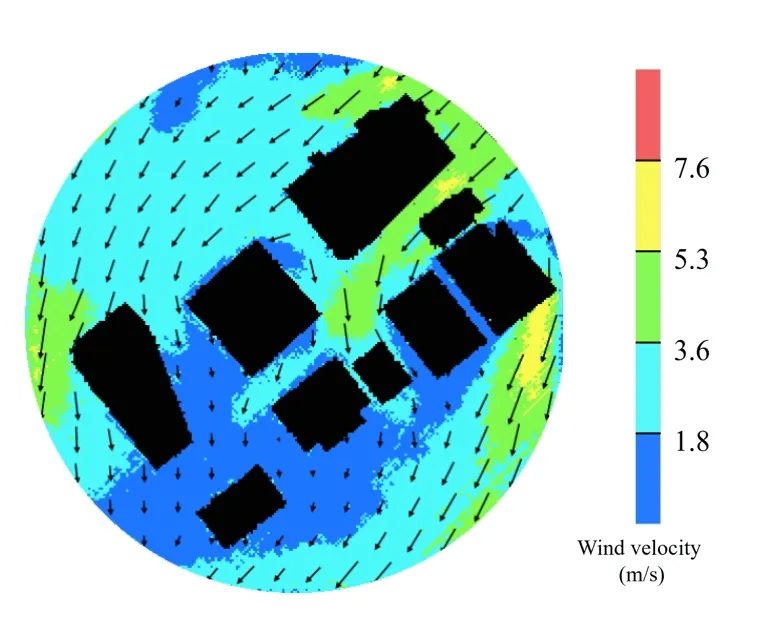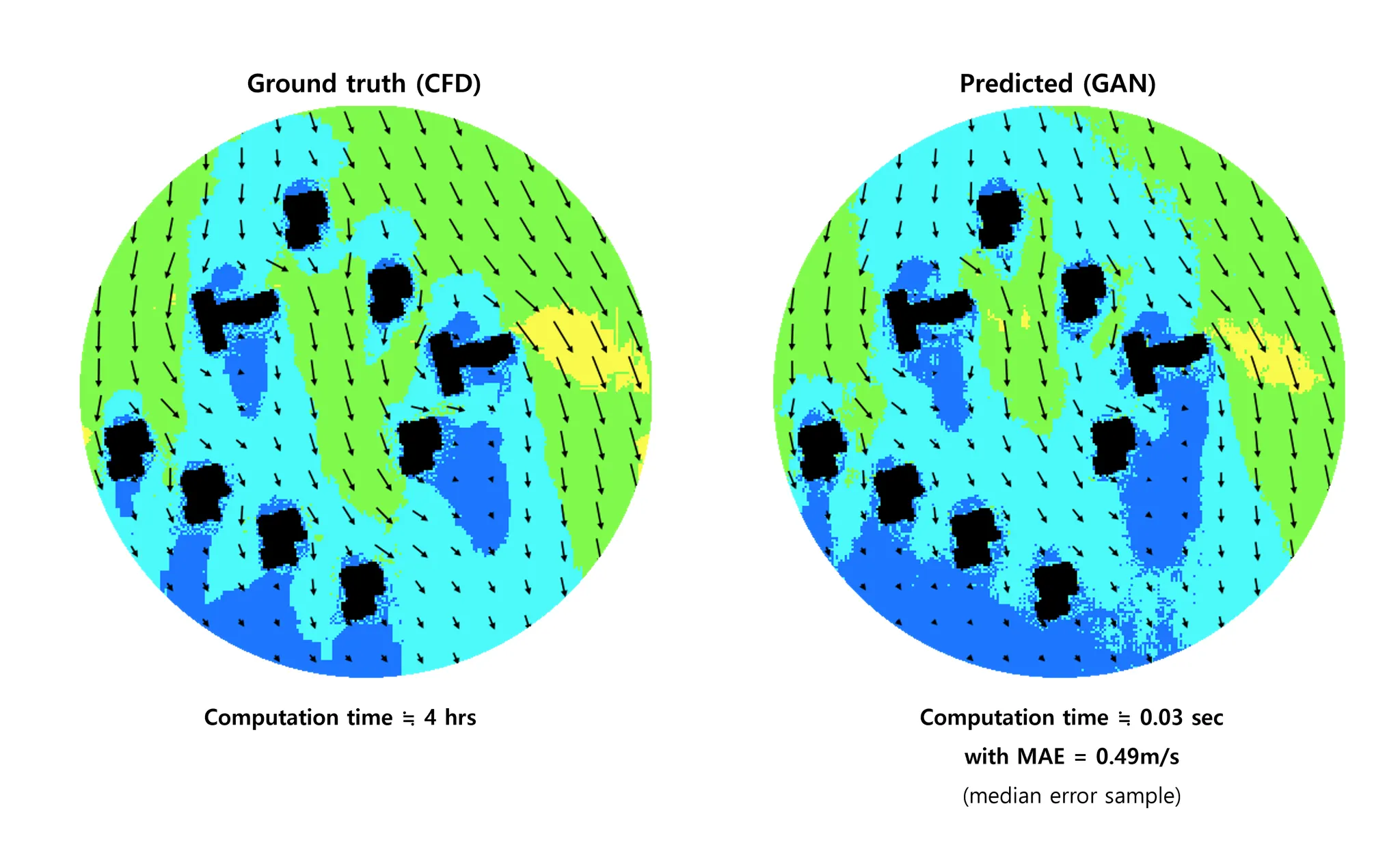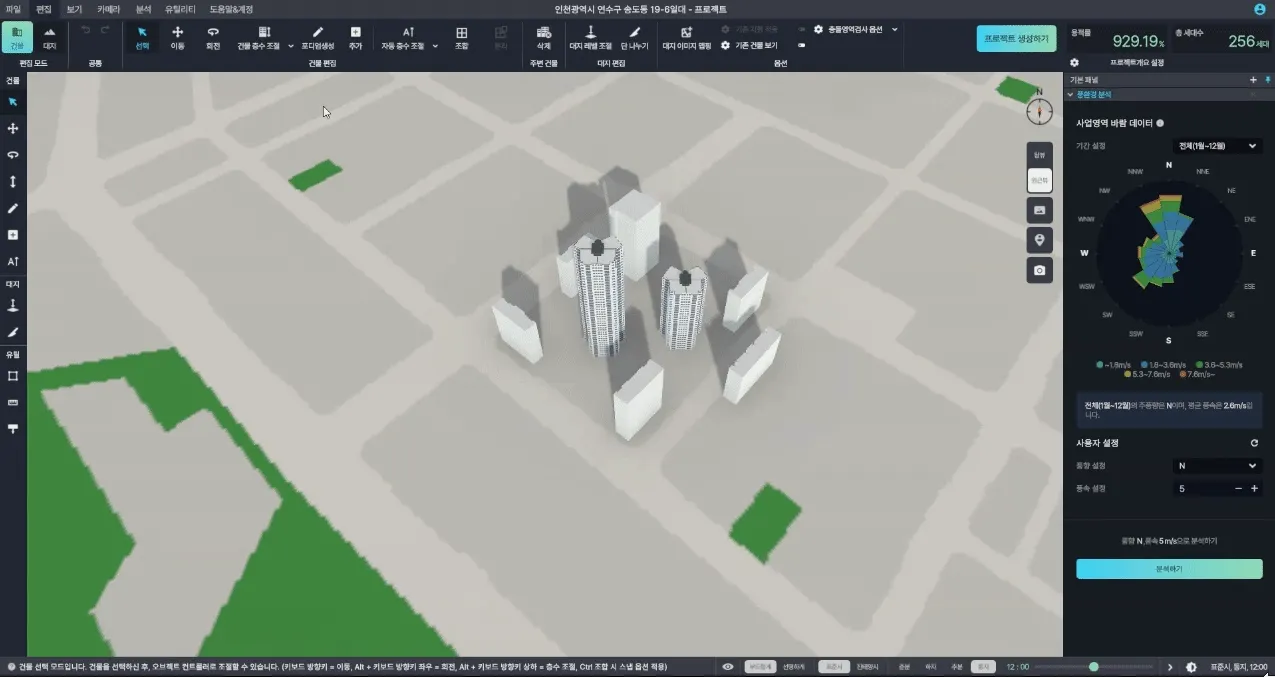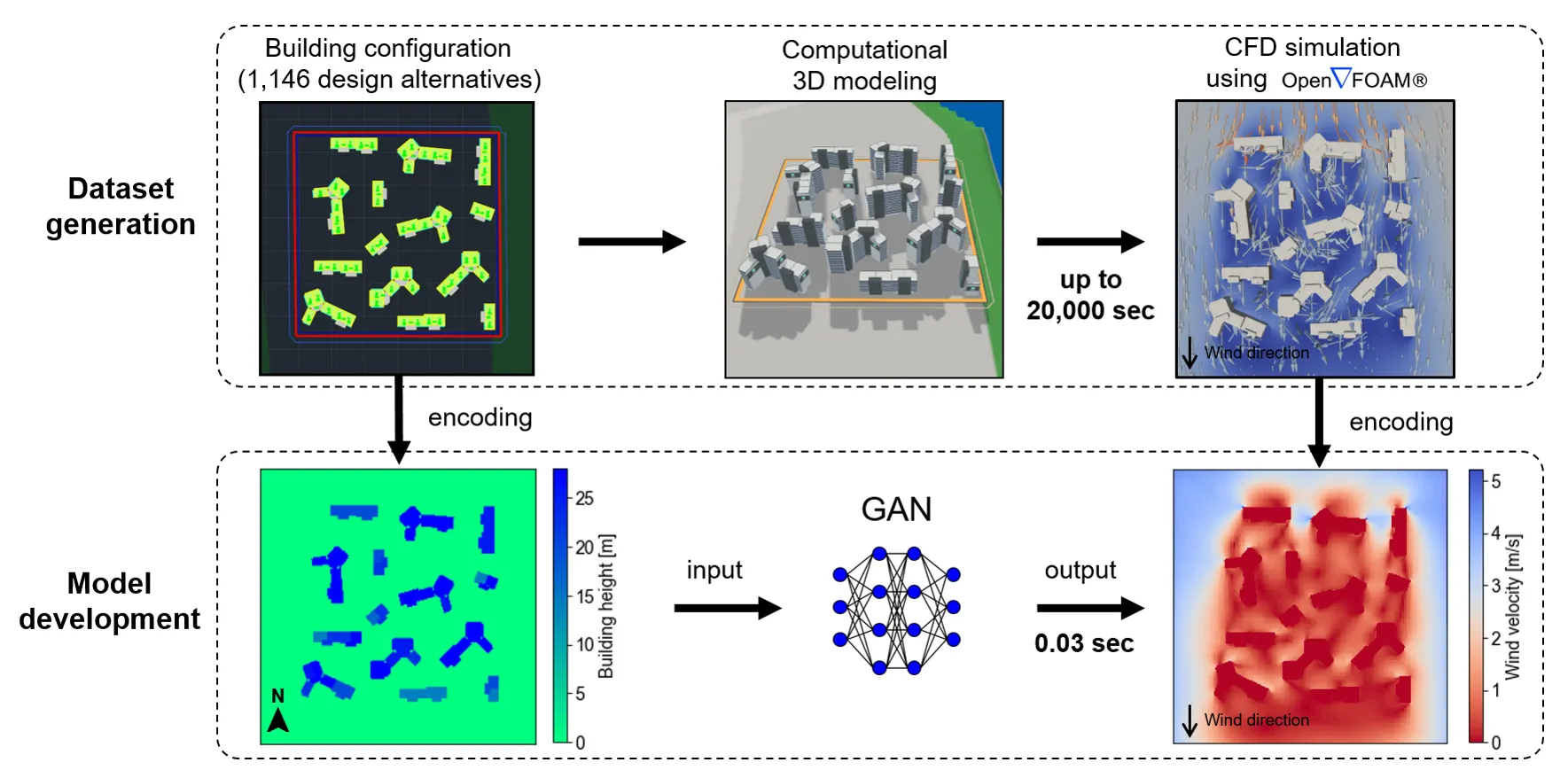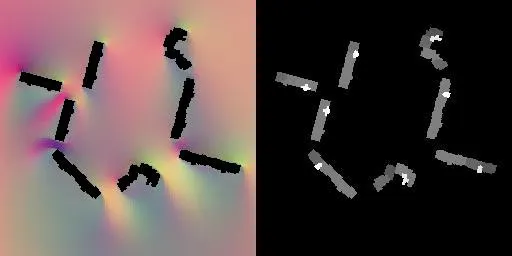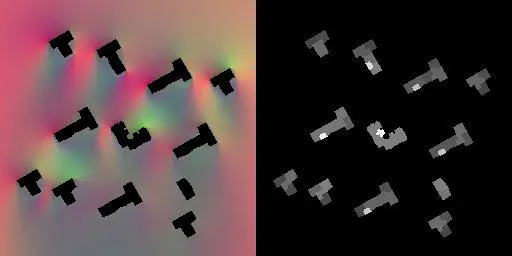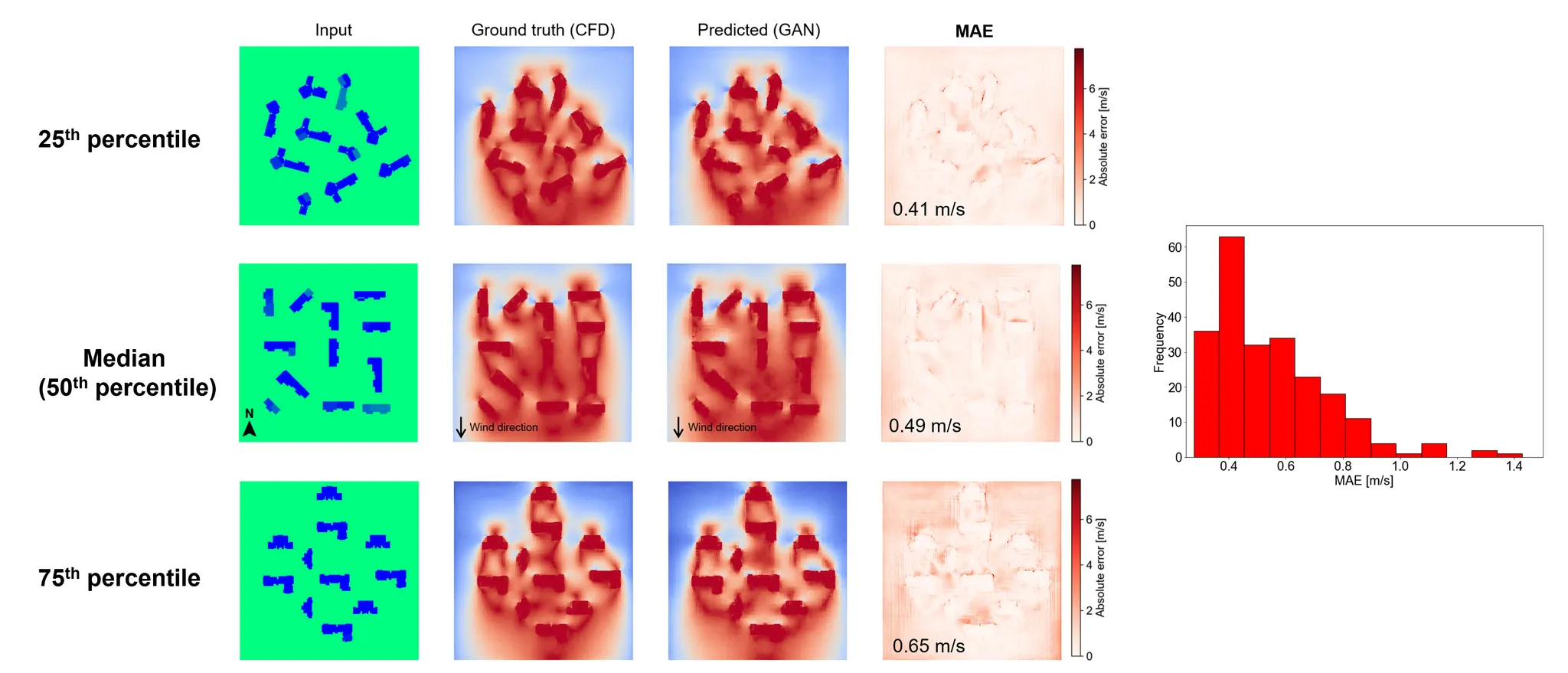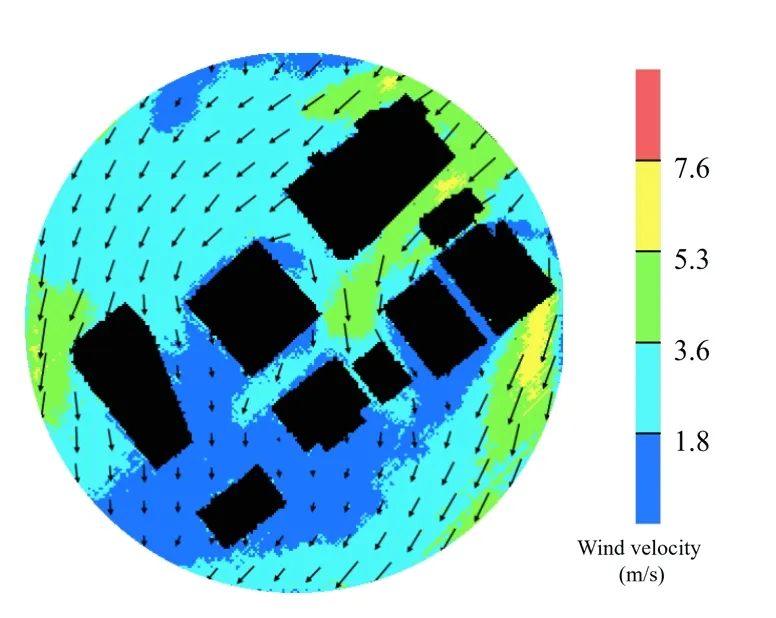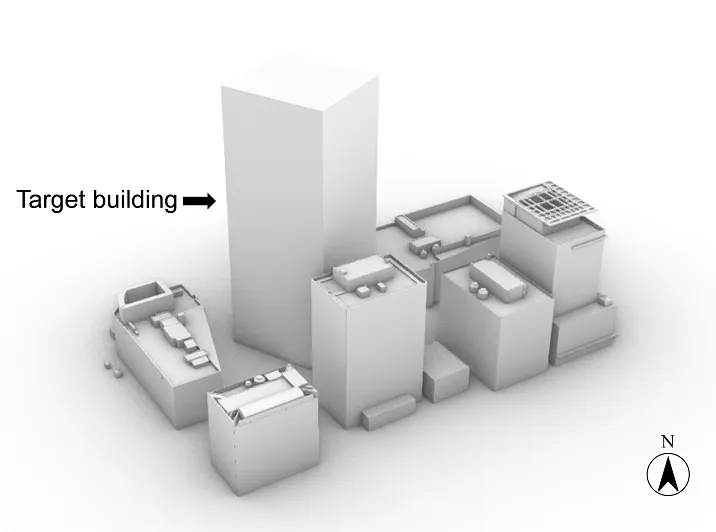•
Snapshot
•
The developed model was deployed and served using AWS Lambda in BUILDIT DESIGNER, a semi-automated 3D modeling computer-aided design program for architecture applications.
•
Abstract
Although CFD (Computational Fluid Dynamics) simulation has been widely adopted to investigate urban wind environments, its high modeling difficulty and high computational cost hinder its integration into urban and architectural design process, especially in the early design stage. This study presents a generative model to synthesize CFD simulations for the real-time prediction of the wind velocity field around buildings. A generative adversarial network, Pix2Pix, is trained on the CFD simulation results of 1,146 building configurations. As a result, the developed model can accurately generate an wind velocity field in an urban area up to 700,000 times faster than the conventional CFD model.
•
Development process of the generative model for urban wind environment simulation
•
Data praparation
◦
Run over 1,000 CFD simulations to generate data
Data samples: CFD simulation results (left) and height map of buildings (right)
•
Model
◦
pix2pix, one of generative adversarial networks (GAN), was selected due to its performance in the image-to-image translation problem
◦
Tensorboard was used for hyperparameter tuning
◦
The input image (pixel size: 256×256×1) represents a height map of buildings on the site area of 256m × 256m and the output image (pixel size: 256×256×3) represents a wind vector field.
•
Result
•
Visualization and Application
◦
Generative design leveraging an optimization algorithm
▪
Three design parameters, i.e., building length, width, and orientation, are considered for a box-shaped high-rise building design optimization problem using an exhaustive search, and the optimal building mass (i.e., the lowest mean building-induced wind speed case) was rapidly found out of 4,477 design alternatives that might be too computationally expensive for CFD simulations.
▪
Optimal building mass

